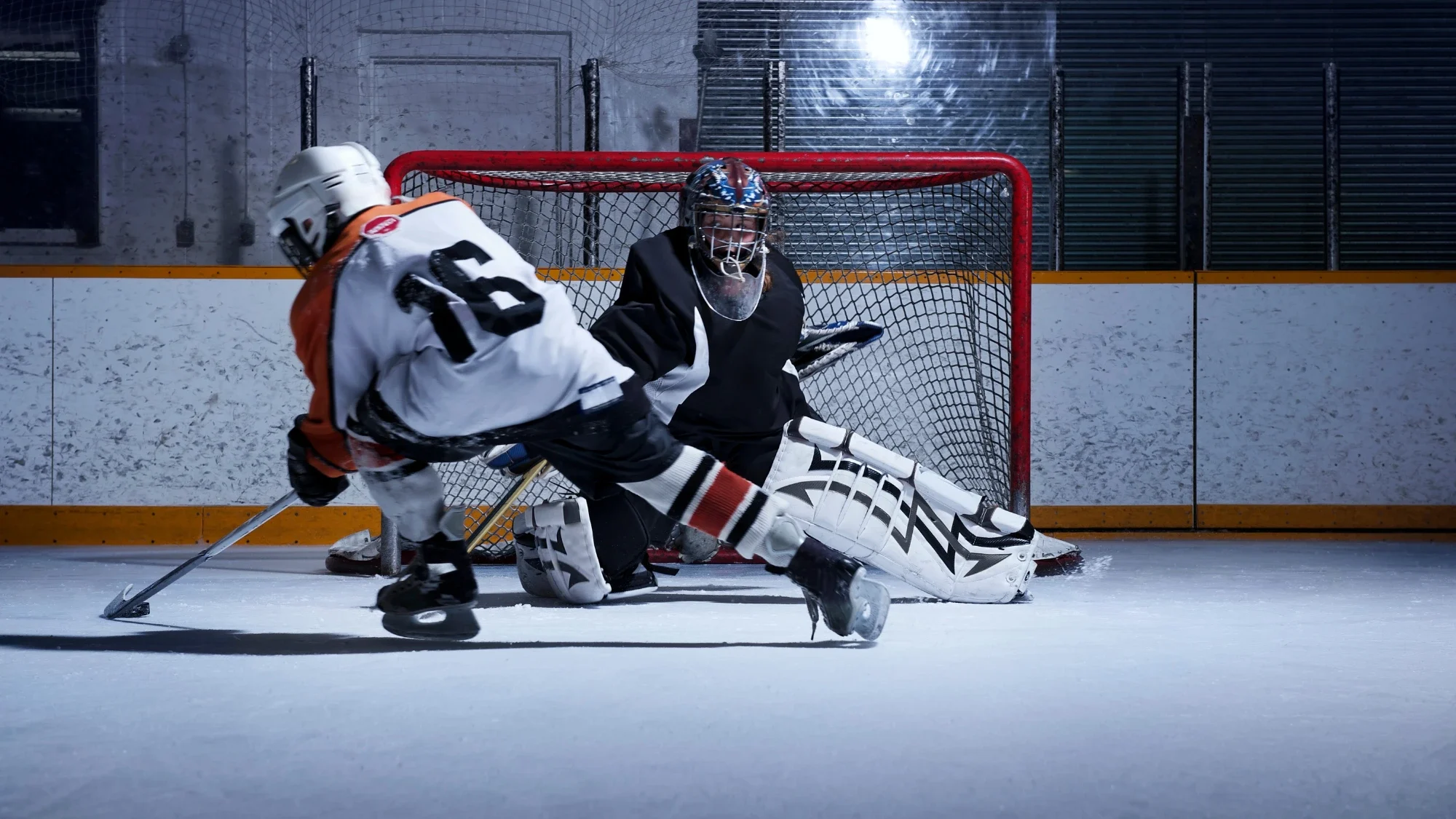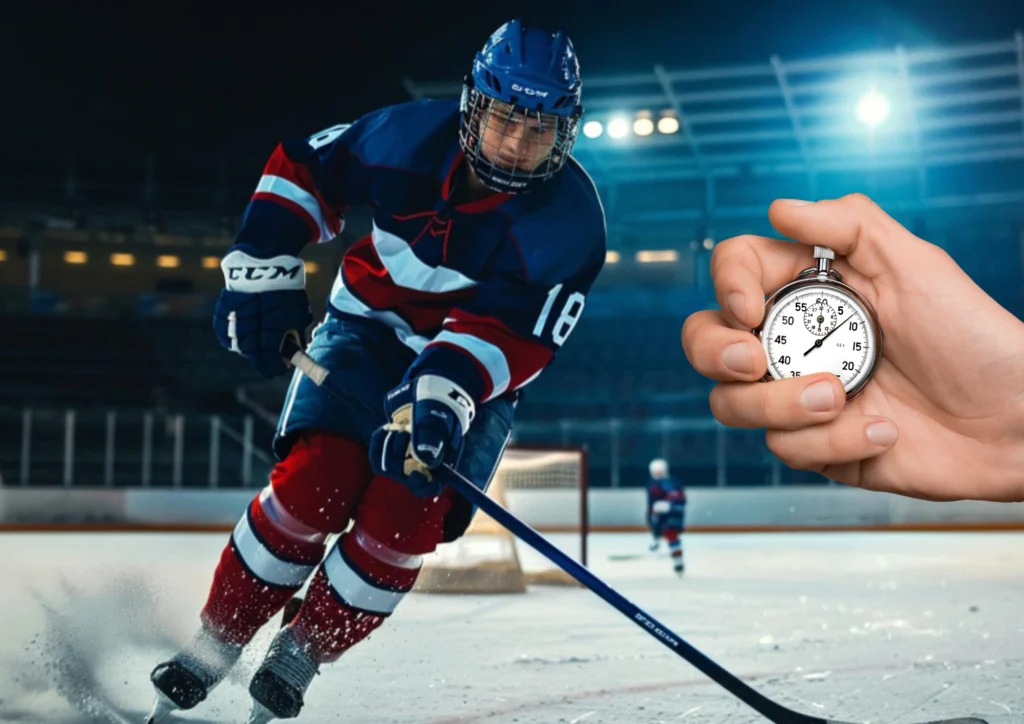Table of Contents
Quick answer
How Long Are Hockey Games? A hockey game lasts 60 minutes of play, but with breaks and stoppages, it usually takes around 2 to 2.5 hours. Overtime can extend the game further.
introduction
Hockey is a fast-paced and thrilling sport that keeps fans on the edge of their seats from start to finish. Whether you’re watching a game live at the rink or catching it on TV, one of the most common questions that comes to mind is: how long are hockey games? Understanding the time structure of a hockey game is essential, especially for new fans, because, unlike many other sports, hockey games can vary in length depending on a few factors. In this article, we’ll break down everything you need to know about the duration of a hockey game, including periods, overtime, stoppages, and more.
The Standard Duration of a Hockey Game
A typical NHL hockey game consists of three periods, each lasting 20 minutes. This makes for a total of 60 minutes of regulation play. However, those 60 minutes of actual game time can be stretched out due to breaks and stoppages, so the total time spent watching a game is much longer.
In reality, an average hockey game lasts about 2 to 2.5 hours from start to finish, depending on factors such as intermissions, stoppages of play, and whether or not the game goes into overtime.
Breaking Down the Periods
As mentioned, a hockey game is divided into three periods:
- First Period: The first 20 minutes of regulation play. At the end of this period, there is a break called an intermission.
- Second Period: Another 20-minute regulation time block followed by a second intermission.
- Third Period: The final 20 minutes of regular gameplay. If the score is tied at the end of this period, the game may move into overtime.
Each period is crucial, with teams pushing to gain or maintain an advantage. The clock only runs during regular play when the puck is in play. Hence, any stoppage—whether it’s a penalty, a goal, or a referee call—pauses the clock. This contributes to the overall length of a hockey game.
Intermissions: The Built-in Breaks
One of the main reasons why hockey games last longer than their 60-minute regulation time is intermissions. Teams head off the ice after the first and second periods for a 15 to 20-minute intermission. These breaks allow players to rest, coaches to adjust strategies, and fans to grab some food or drinks.
Intermissions are also an essential part of the game experience for broadcasters, who use this time for commercials and in-depth analysis of the game’s progress.
Overtime: Extending the Game
If a game is tied after the third period, it may enter overtime. In the regular NHL season, overtime consists of 5 minutes of sudden death, meaning the first team to score wins. Overtime is played with only three skaters on each side (compared to the usual five) to create more scoring chances and quicken the pace.
If no one scores during overtime, the game moves into a shootout, where players take turns trying to score one-on-one against the opposing goalie. Each team gets three shots in the shootout, and the team with the most goals wins. If the score remains tied after three rounds, the shootout continues into sudden-death rounds until a winner is determined.

In playoff games, overtime rules differ. Instead of a 5-minute sudden death period, the game continues in 20-minute overtime periods until a goal is scored. Playoff overtime periods are played with a total of five skaters on each team, and games can go on indefinitely, depending on how long it takes for a team to score. Some playoff games have extended well past the standard game time, with multiple overtime periods adding hours to the game.
Stoppages of Play
Several other factors contribute to the overall length of a hockey game, most notably stoppages of play. These include:

- Penalties: When a player breaks a rule and is sent to the penalty box, the game stops while officials sort out the infraction. Penalties can last for two, four, or five minutes, depending on the severity of the infraction. Still, the stoppage time can add more minutes to the game duration.
- Injury Timeouts: If a player is injured, the game is paused to allow medical personnel to assist the player off the ice. This can sometimes lead to longer delays, especially if the injury is serious.
- Television Timeouts: NHL games broadcasted on TV have built-in television timeouts, usually three per period, lasting about 2 minutes each. These are scheduled at specific times when play stops naturally (e.g., after a whistle or a goal).
Overtime and Shootouts in International Play
While the NHL has its own overtime and shootout rules, other leagues and tournaments, such as international hockey, have slightly different regulations. For example, in the IIHF World Championships or the Winter Olympics, the overtime periods may be extended, and shootouts may follow different formats.
During international play, if a game reaches the overtime stage, teams usually play 10 minutes of overtime during the knockout rounds, and if no goals are scored, a shootout follows. However, in the championship round, the overtime period is extended to 20 minutes to allow more time for a decisive goal.
Factors That Can Affect the Length of a Hockey Game
While most hockey games last between 2 and 2.5 hours, several factors can extend the game time:
- Penalties and Power Plays: If a game has a high number of penalties, it can stretch out the overall game time, as referees need time to make calls, players need to serve time in the penalty box, and teams need to adjust to power plays, and penalty kills.
- Injury Delays: Serious injuries or equipment issues can result in extended stoppages, which push the overall game time past the typical 2.5-hour mark.
- Goal Reviews: Sometimes, the referees may need to review whether a goal was valid, especially if the puck crosses the line questionably. While crucial for accuracy, these video reviews can add minutes to the game.
- Multiple Overtimes in Playoff Games: As mentioned earlier, playoff games can sometimes stretch for hours due to the unlimited overtime rule. Games have been known to last 4 or even 5 hours during the postseason.
How Long Are Hockey Games Compare to Other Sports?

If you’re wondering how hockey games stack up against other sports in terms of length, they fall somewhere in the middle. Baseball games can take 3 to 4 hours, depending on extra innings and game flow. Football games, especially in the NFL, typically last about 3 hours, with multiple stoppages, replays, and a more extended halftime break. Basketball games, such as those in the NBA, tend to last around 2 to 2.5 hours, similar to hockey.
What sets hockey apart is the constant movement and action on the ice. While stoppages do occur, hockey doesn’t have the same number of breaks as baseball, soccer or football, making the action-packed nature of the game a big draw for fans.
Conclusion
So, how long are hockey games? While the regulation time is 60 minutes, the total time commitment for fans is generally around 2 to 2.5 hours. Factors like intermissions, overtime, stoppages, and playoffs can all extend this time. Despite the extra minutes, hockey’s fast-paced, high-energy nature keeps fans engaged from the first puck drop to the final whistle. Whether you’re watching live or from your couch, hockey offers a unique blend of athleticism, strategy, and excitement, making every second worth it!







